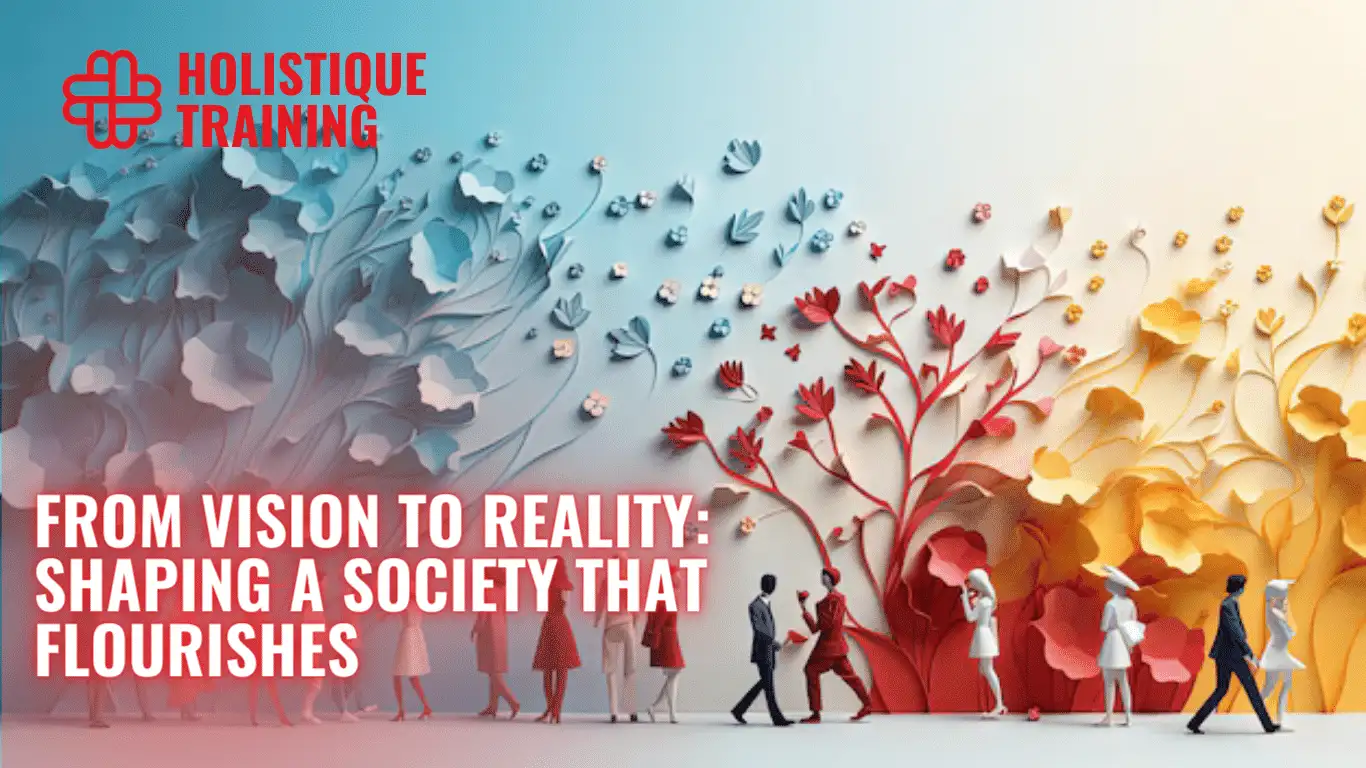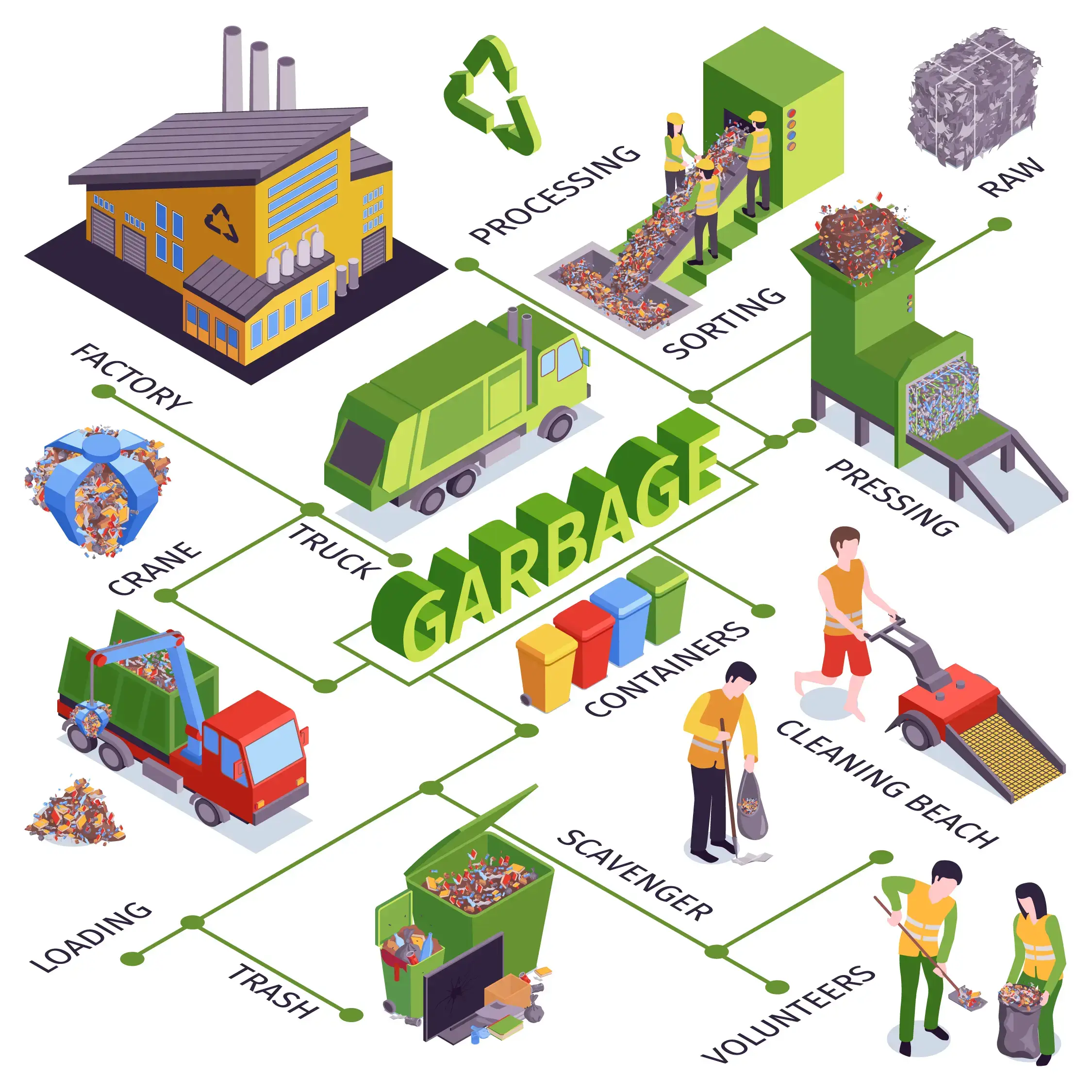What Makes a Society Flourish?
How Can We Tailor Education to Foster a Flourishing Society?
What Are Effective Ways to Reduce Income Inequality?
How Can We Guarantee Universal Health Care Access?
What Strategies Strengthen Community Bonds?
Introduction
In a world increasingly characterized by rapid change and complex challenges, the pursuit of a flourishing society has never been more important. At its core, a flourishing society embodies a community where individuals not only survive but thrive—enjoying high levels of well-being, economic prosperity, social cohesion, and environmental sustainability. This article delves into the foundational elements that contribute to the vitality and resilience of communities, exploring a diverse array of strategies ranging from enhancing education and reducing income inequality to ensuring universal healthcare and strengthening community bonds. By examining these pivotal areas, we aim to outline a roadmap towards cultivating societies that not only meet the basic needs of their members but also foster an environment where every individual has the opportunity to achieve their full potential, contribute meaningfully to their community, and live a fulfilling life amidst a supportive and vibrant social fabric.
What Makes a Society Flourish?
A society flourishes when it successfully fosters the well-being, happiness, and prosperity of its citizens, creating an environment where individuals can achieve their potential, contribute to their community, and live satisfying lives. Several interrelated factors contribute to a flourishing society:
- Economic Stability and Equality: A strong, stable economy, coupled with policies aimed at reducing income inequality, ensures that all citizens have access to the resources they need to live comfortable lives. Economic opportunity and fair wages are fundamental to reducing poverty and enabling upward mobility.
- Accessible, Quality Education: Education is a cornerstone of societal progress. Accessible, high-quality education equips individuals with knowledge, skills, and critical thinking abilities, paving the way for innovation, employment opportunities, and personal development.
- Comprehensive Healthcare: A society that prioritizes healthcare ensures that all members have access to necessary medical services without undue financial burden. Preventive care, mental health services, and emergency healthcare are vital components of a well-rounded healthcare system.
- Environmental Sustainability: A flourishing society works harmoniously with its environment, adopting sustainable practices to protect natural resources for future generations. This includes efforts to combat climate change, preserve biodiversity, and promote sustainable agriculture and energy use.
- Robust Social Services: Strong social support systems for vulnerable populations, such as the elderly, disabled, and impoverished, are indicative of a caring and inclusive society. Social services, including housing assistance, food security, and unemployment benefits, help cushion individuals from the hardships of life.
- Civic Engagement and Social Capital: Societies thrive when citizens are actively involved in their communities and governance. Civic engagement, whether through volunteering, participating in local politics, or joining community organizations, strengthens social bonds and fosters a sense of belonging and responsibility.
- Justice and Equality: A society that treats all its members fairly, ensuring equality before the law and protection of human rights, is foundational to flourishing. This encompasses racial, gender, and economic justice, as well as the protection of individual freedoms and rights.
- Cultural Vibrancy and Diversity: A society that celebrates diversity and promotes cultural expression is more dynamic, innovative, and inclusive. Supporting the arts, preserving cultural heritage, and embracing multiculturalism enrich the social fabric and enhance communal life.
- Mental Health and Well-being: Recognizing and addressing mental health is as crucial as physical health to societal well-being. Support for mental health, through both healthcare provision and community initiatives, improves quality of life and productivity.
Table 1: Key Components Contributing to a Flourishing Society
Aspect | Description |
Economic Stability and Equality | Ensures access to resources for comfortable living through strong economies and policies reducing income inequality. |
Accessible, Quality Education | Provides knowledge and skills for innovation and personal development. |
Comprehensive Healthcare | Offers access to essential medical services without financial burden, including preventive and emergency care. |
Environmental Sustainability | Adopts practices to protect natural resources and combat climate change for future generations. |
Robust Social Services | Supports vulnerable populations with services like housing, food security, and unemployment benefits. |
Civic Engagement and Social Capital | Encourages active community and governance involvement to strengthen social bonds. |
Justice and Equality | Ensures fairness and protection of human rights, encompassing racial, gender, and economic justice. |
Cultural Vibrancy and Diversity | Promotes diversity and cultural expression, enriching the social fabric. |
Mental Health and Well-being | Recognizes the importance of both healthcare provision and community initiatives in improving quality of life. |
These factors are interconnected, each contributing to the holistic well-being of society. A flourishing society is marked by its resilience, inclusivity, and the collective happiness of its people, striving to improve continuously for the betterment of all its members.
How Can We Tailor Education to Foster a Flourishing Society?
Tailoring education to foster a flourishing society involves creating an inclusive, adaptive, and forward-thinking educational system that not only imparts knowledge but also cultivates the skills, values, and attitudes necessary for individuals to contribute positively to their community and the wider world. Here are key strategies to achieve this goal:
- Emphasize Holistic Development: Beyond academic excellence, education should aim at the holistic development of students, including emotional, social, and physical growth. Incorporating curricula that promote emotional intelligence, resilience, empathy, and ethical thinking prepares students to navigate life's challenges and contribute positively to society.
- Incorporate Civic Education: Integrate civic education into the curriculum to foster a sense of civic responsibility and awareness among students. Understanding the functions of government, the importance of voting, community involvement, and the principles of democracy encourages students to become active, informed citizens.
- Promote Critical Thinking and Problem-Solving: Equip students with the skills to think critically, question norms, and solve complex problems. Education should encourage innovation and creativity, enabling students to devise solutions to societal challenges, whether they be environmental, social, or economic.
- Foster Global Awareness and Inclusivity: A curriculum that includes global history, cultures, languages, and contemporary issues promotes understanding and respect for diversity. Education should celebrate multiculturalism and teach the value of inclusivity and tolerance, preparing students to thrive in a globally connected world.
- Adapt to Future Needs: Education systems must be adaptive and forward-looking, preparing students for the jobs of the future. This includes a focus on STEM (science, technology, engineering, and mathematics) education, digital literacy, and the skills required for emerging industries and technologies.
- Encourage Community Engagement and Service Learning: Integrating community service and engagement projects into the educational experience helps students apply their learning in real-world contexts, fostering a sense of responsibility towards their community and environment.
- Ensure Accessibility and Equity: Education should be accessible to all, regardless of socioeconomic status, race, gender, or disability. Policies and practices aimed at reducing barriers to education, such as scholarships, free or subsidized education, and inclusive teaching methods, are essential for building an equitable society.
- Support Lifelong Learning: Recognize that education does not end with formal schooling. Encouraging lifelong learning through community education programs, online learning platforms, and adult education courses ensures that all citizens can continue to grow, adapt, and contribute to society throughout their lives.
- Involve Stakeholders: Developing an educational system that fosters a flourishing society requires the involvement of various stakeholders, including educators, parents, community leaders, and policymakers. Collaboration ensures that education is responsive to the needs of the community and aligned with societal goals.
By tailoring education in these ways, societies can cultivate well-rounded, informed, and compassionate individuals equipped to face future challenges, contribute to societal well-being, and lead fulfilling lives.
What Are Effective Ways to Reduce Income Inequality?
Reducing income inequality is a complex challenge that requires comprehensive and multifaceted strategies. Effective approaches to lessen the income gap and promote a more equitable distribution of wealth include:
- Progressive Taxation: Implementing a progressive tax system, where higher income brackets are taxed at higher rates, can help redistribute income more fairly. This approach ensures that those with the greatest capacity to contribute do so, providing funds for social programs that benefit lower-income individuals and families.
- Minimum Wage Adjustments: Raising the minimum wage to a living wage ensures that workers can afford basic necessities, reducing poverty and income inequality. This measure should be carefully balanced with economic conditions to avoid unintended consequences on employment.
- Universal Basic Income (UBI): Implementing a UBI program, where all citizens receive a regular, unconditional sum of money, can provide financial security for everyone, reducing poverty and income inequality.
- Education and Training Opportunities: Investing in education and vocational training programs can equip individuals with the skills needed for higher-paying jobs. Access to education is crucial for breaking the cycle of poverty and reducing long-term income inequality.
- Strengthening Labor Rights: Protecting workers' rights through stronger labor unions and collective bargaining agreements can help workers secure better wages, benefits, and working conditions, contributing to a more equitable income distribution.
- Inclusive Economic Growth: Fostering economic policies that promote inclusive growth ensures that the benefits of economic development are shared more broadly across society. This includes supporting small and medium-sized enterprises, encouraging entrepreneurship, and investing in sectors that create jobs.
- Social Welfare Programs: Expanding access to social welfare programs, such as healthcare, childcare, and housing assistance, can significantly reduce living costs for low-income families, effectively increasing their disposable income and reducing inequality.
- Gender and Minority Equality: Addressing wage gaps and employment barriers faced by women and minority groups is crucial for reducing overall income inequality. This includes enforcing equal pay laws, promoting diversity in hiring, and supporting women's participation in the workforce.
- Financial Regulation: Implementing financial regulations to prevent excessive speculation and ensure fair lending practices can reduce income inequality. This includes measures to control executive compensation, close tax loopholes, and combat tax evasion.
- Global Cooperation: Since income inequality is a global issue, international cooperation is essential. Efforts to establish fair trade agreements, combat tax havens, and ensure multinational corporations pay their fair share of taxes are crucial for reducing income inequality on a global scale.
Addressing income inequality requires sustained efforts from governments, businesses, and civil society. Through a combination of these strategies, societies can work towards a more equitable distribution of wealth and opportunities, ensuring that economic growth benefits everyone.
How Can We Guarantee Universal Health Care Access?
Guaranteeing universal healthcare access involves comprehensive reforms and initiatives that ensure everyone has access to healthcare services without suffering financial hardship. Here are key strategies in order to achieve this goal:
- Public Healthcare Financing: Implement a healthcare financing system that pools resources to provide healthcare for all, regardless of income, employment, or health status. This could be through taxation, social health insurance, or a combination of funding sources.
- Legislation and Policy Reform: Enact laws and policies that mandate universal health coverage and outline the rights to access healthcare services. Policies should define the scope of services covered, including preventive, curative, and rehabilitative care.
- Strengthen Primary Healthcare: Focus on strengthening primary healthcare systems as the foundation of universal healthcare. Ensure that comprehensive, quality primary care services are accessible to all communities.
- Invest in Healthcare Infrastructure: Increase investment in healthcare infrastructure, especially in underserved areas. This includes building healthcare facilities, investing in medical equipment, and ensuring adequate supply chains for pharmaceuticals and medical supplies.
- Expand Healthcare Workforce: Address shortages in the healthcare workforce through education, training, and recruitment strategies. Ensure an adequate distribution of healthcare professionals across regions and specialties.
- Implement Telemedicine and Digital Health Solutions: Leverage technology to extend healthcare access to remote and underserved populations. Digital health platforms and telemedicine can provide critical healthcare services where traditional facilities are not accessible.
- Public-Private Partnerships (PPPs): Encourage PPPs to leverage resources, expertise, and efficiencies from both the public and private sectors. However, ensure that these partnerships align with the goal of universal health coverage and do not compromise the quality or accessibility of care.
- Healthcare Cost Control: Implement measures to control healthcare costs, including regulating healthcare prices, promoting the use of generic medications, and implementing cost-effective interventions.
- Health Education and Promotion: Invest in health education and promotion to empower individuals with the knowledge to make informed health decisions. Prevention and early detection can reduce the overall cost of healthcare.
- Inclusive Policy-making: Involve a wide range of stakeholders, including patients, healthcare providers, civil society, and the private sector, in healthcare policy-making and implementation to ensure that the healthcare system meets the needs of all parts of the population.
Guaranteeing universal healthcare access requires a multi-faceted approach that addresses financing, infrastructure, workforce, and policy challenges. By adopting these strategies, countries can move closer to providing all citizens with access to the healthcare services they need, ensuring healthier populations and more equitable societies.
What Strategies Strengthen Community Bonds?
Strengthening community bonds involves a multifaceted approach that fosters unity, support, and collaboration among community members. Here are key strategies in order to achieve this:
- Community Engagement Initiatives: Organize regular community events and activities that encourage interaction among residents. These could range from local festivals, sports events, and art exhibitions to neighborhood clean-up days. Engaging activities create shared experiences and a sense of belonging.
- Developing Accessible Public Spaces: Enhance and sustain public areas including parks, community gardens, and recreational centers to provide a venue for gatherings, socialization, and communal activities. The establishment of well-planned public spaces plays a vital role in fostering community connections and engagement.
- Promoting Community Volunteerism: Motivate and back volunteer efforts in the community. By offering avenues for residents to engage in community-driven projects and endeavors, a sense of belonging and pride in their neighborhood is cultivated.
- Community-Based Organizations Support: Strengthen and support local community organizations and nonprofits that work on issues relevant to the community's needs. These organizations can act as a bridge between the community members and local government, ensuring that voices are heard and needs are addressed.
- Neighborhood Communication Platforms: Utilize social media, community bulletin boards, and local newsletters to keep residents informed and connected. Effective communication fosters transparency and trust among community members and local authorities.
- Community Education and Workshops: Offer workshops, seminars, and classes that address community interests and challenges. Educational programs can cover a wide range of topics, from health and wellness to financial literacy and environmental sustainability.
- Inclusive Decision-making Processes: Involve community members in the decision-making processes that affect their lives. This can be achieved through town hall meetings, community forums, and participatory budgeting exercises. Inclusivity in decision-making builds trust and strengthens community bonds.
- Cultural and Diversity Celebrations: Celebrate the cultural diversity within the community through events that showcase different cultures’ traditions, food, music, and art. Recognizing and appreciating diversity strengthens community cohesion and mutual respect.
- Conflict Resolution Mechanisms: Establish effective mechanisms for conflict resolution within the community. Training community mediators and setting up conflict resolution centers can help address disputes constructively, preventing escalation and fostering a peaceful coexistence.
- Mentorship and Support Networks: Create mentorship programs and support networks that connect individuals across different age groups, backgrounds, and experiences. These connections can provide valuable guidance, support, and a sense of intergenerational solidarity.
By implementing these strategies, communities can foster stronger bonds among residents, creating a more cohesive, supportive, and vibrant community life. Strong community bonds are essential for addressing common challenges, enhancing the quality of life, and ensuring that all community members feel valued and connected.
Conclusion
In conclusion, building a flourishing society requires a multifaceted approach that addresses the economic, social, and environmental dimensions of well-being. From tailoring education to meet the needs of a diverse population, to ensuring economic opportunities are accessible to all, and fostering a healthcare system that serves every member of the community, the strategies outlined offer a blueprint for creating communities that not only survive challenges but thrive amidst them. Central to this endeavor is the strengthening of community bonds, which underpins the resilience and vitality of society. As we look towards the future, it is clear that the journey towards a flourishing society is a collective one, requiring the commitment, innovation, and cooperation of all its members. By embracing these strategies, societies can pave the way for a future marked by prosperity, inclusivity, and sustainability—a future where every individual has the opportunity to thrive.
Frequently Asked Questions(FAQ)
What strategies can reduce income inequality?
Effective strategies include implementing progressive taxation, adjusting minimum wages, exploring universal basic income, expanding access to education and training, strengthening labor rights, promoting inclusive economic growth, enhancing social welfare programs, ensuring gender and minority equality, and regulating financial practices.
How can universal health care access be guaranteed?
Universal healthcare access can be achieved through public healthcare financing, legislation and policy reform, strengthening primary health care, investing in healthcare infrastructure, expanding the healthcare workforce, implementing telemedicine and digital health solutions, fostering public-private partnerships, controlling healthcare costs, and prioritizing health education and promotion.
How can community bonds be strengthened?
Strengthening community bonds involves community engagement initiatives, development of accessible public spaces, support for local volunteer programs, backing community-based organizations, enhancing neighborhood communication platforms, offering community education and workshops, including residents in decision-making processes, celebrating cultural diversity, establishing conflict resolution mechanisms, and creating mentorship and support networks.
Are there ethical considerations in promoting a flourishing society?
Yes, ethical considerations include ensuring equity and fairness in access to resources, respecting cultural diversity and individual rights, promoting inclusive and participatory governance, and balancing economic growth with environmental sustainability and social well-being.
How can individuals contribute to a flourishing society?
Individuals can contribute by actively participating in civic life, volunteering in community projects, practicing environmental sustainability, engaging in lifelong learning, promoting inclusivity and diversity, and supporting ethical and responsible practices in both personal and professional spheres.






















